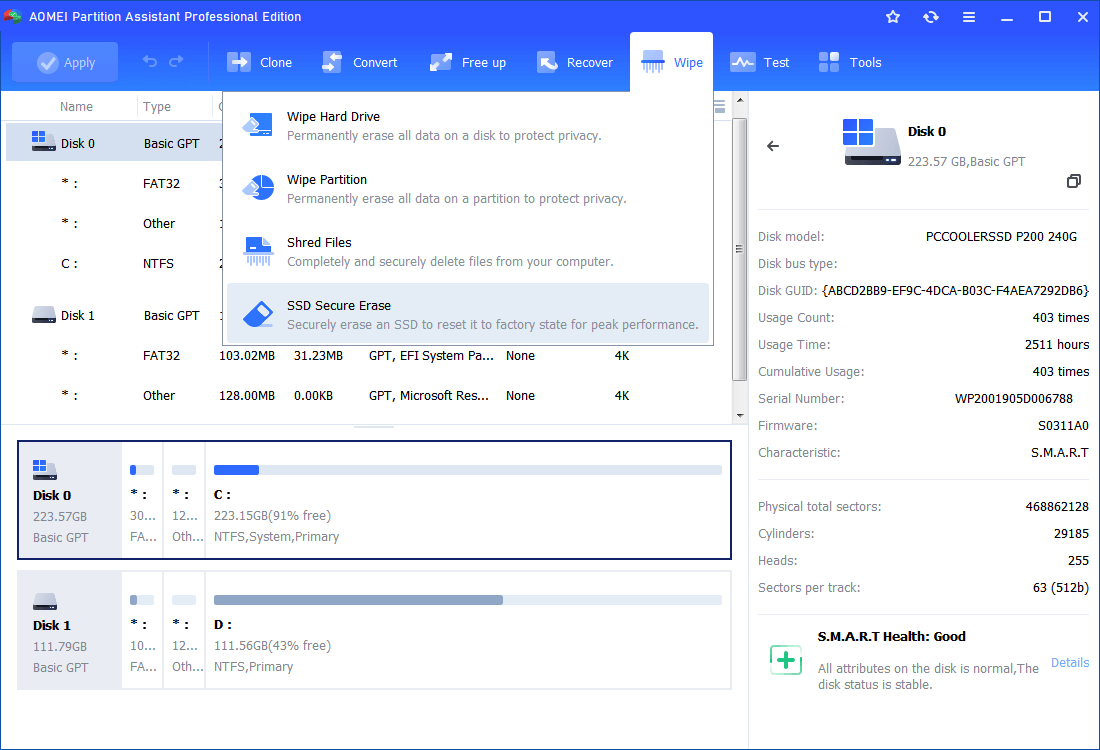

SECURE ERASE SSD LINUX INSTALL
The Ubuntu Software Center will install BleachBit and show you a small progress bar.
SECURE ERASE SSD LINUX PASSWORD
Enter your password and click the Authenticate button. Ubuntu Software will ask for your password for permission. Then enter “BleachBit” in the search field.Ĭlick on BleachBit and click the Install button. Use the search field by clicking the magnifying glass in the top-right corner of the window. You can now browse through Ubuntu Software to look for BleachBit, but searching for it is faster.
SECURE ERASE SSD LINUX FREE
In the new window, make sure the box next to “Community-maintained free and open-source software (universe)” is checked, then click “Close” and “Reload.” If it is already checked, you may just click “Close.”

To ensure that it is listed, enable community-maintained packages by clicking “Ubuntu Software” in the top menu and then clicking “Software & Updates.” Type “software” in the search field and click the Ubuntu Software icon.īy default, BleachBit will not be listed. Otherwise, click on the application button in the lower left-hand side of the screen and use the search field. If it’s in your favorite applications, you can click on it on the left-hand side of the screen. You can get BleachBit on Ubuntu by using the Ubuntu Software application. Installing BleachBit Anchor link Installing with Ubuntu Software You can find further information in the documentation. It is also possible to write custom file deletion instructions. It’s much more sophisticated than the built-in “shred.” BleachBit can be used to quickly and easily target individual files for secure deletion, or to implement periodic secure deletion policies. On Linux, we currently suggest using BleachBit, an open-source secure deletion tool for Linux and Windows. Your operating system probably already has software that can do this for you-software that can overwrite all of the “empty” space on your disk with gibberish and thereby protect the confidentiality of deleted data. This makes it difficult to retrieve what used to be written there. So, what’s the best way to delete a file forever? Ensure it gets overwritten immediately. And with a little work and the right tools (such as “undelete” software or forensic methods), that “deleted” file can be retrieved. Until this happens, that “deleted” file is still on your disk it’s just invisible to normal operations. Therefore, it may be weeks, months, or even years before that file is overwritten. (You can read more about why this causes problems for secure deletion here.) If you’re using an SSD or a USB flash drive, jump to this section below.ĭid you know that when you move a file on your computer into your computer's trash folder and empty the trash, the file is not completely erased? Computers normally don't “delete” files when you move a file to the trash, your computer just makes the file invisible and allows the space it took up to be overwritten by something else sometime in the future. Secure deletion on SSDs, USB flash drives, and SD cards is very hard! This is because these types of drives use a technique called wear leveling and do not provide low-level access to the bits as stored on the drive. These instructions apply only to traditional disk drives, and not to Solid State Drives (SSDs), which are standard in modern computers, USB keys/USB thumb drives, or SD cards/flash memory cards.

The instructions below should only be used for securely deleting data from spinning drives.


 0 kommentar(er)
0 kommentar(er)
